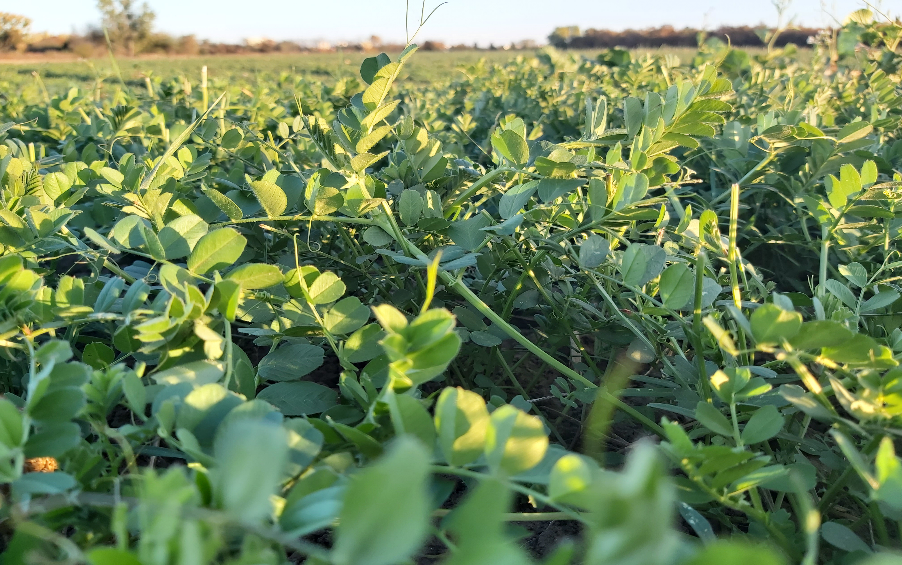Pathways to carbon neutral agricultural systems, preventing negative impacts on biodiversity and ecosystems
The long experience with field experimental trials support public and private companies, organizations and communities. Test innovative practices is crucial to obtain evidence on actions carry out. The mission is to promote only practices for a healthy planet, addressed to food decarbonization goals, as well as restoring global biodiversity.
Agronomists and environmental engineering identify best practices to achieve short and long term strategic objectives. Due diligence and feasibility studies sustain food companies promoting the new regenerative agriculture. Cost and emissions analysis monitor endurable actions taken on fields. Routine technical and operational analysis support farmers and food chains in this new agricultural challenge.
The holist approach supported by Decision Support Systems (DSSs) goes along with farmer during the entire transition process. Landowners are not alone, year-long regenerative agriculture training program are constantly planned from the outset.
Interested to work with us on carbon farming? Get moreonour MRV, tools and open programs!
One of the main drivers to achieve carbon neutrality is the investment on regenerative agriculture.
Climate change is no longer a distant threat. Fight climate crisis with practices sequestering more carbon in the soil and help make farmland more resilient is a priority.
Regenerative agriculture improves long-term farmer livelihood through countless aspects such as better soil health, more soil organic and inorganic carbon as organic matter, preserving and increasing biodiversity, decreasing erosion risk. All achieved cutting GHGs emissions and preserving profitability.
The expertise and flexibility of our team allows us to be involved at all levels of a farming business, from the field to the boardroom.
In Horta’s protocols most measures are usually contemporary implemented by farmers to restore soil and ecosystem health, address inequity, and leave our land, waters, and climate in better shape for future generations.
Horta is supporting growers to introduce a wide range of regenerative agricultural practices, including green manure, reducedcultivation systems, improvingnutrient use efficiency and long-yearrotations.
These practices aim to achieve higher resilience of field crop production systems.
Practices promoted have been tested in the last decade in Horta’s field trials, aimingat tuning the technique and recommend precise actions and practicaltips to get a better chance of success.
The synergic action of Decision Support Systems (DSSs) and regenerative practices ishelping to guarantee multiple co-benefits including increased soil fertility and biodiversity, reductions in on-field greenhouse gas emissions and improving water quality.
Hundreds of data collected in the most recent projects demonstrate this, without a doubt!

Cover crops, called also catch crop, non-cash crops or green manures are sown between seasonal cash crops. They provide potential benefits to a rotation.

Cover crops main agronomic effects can be classified in 10 main effects:
- reducing GHG emissions directly or indirectly (less N next crop)
- increasing soil biomass to improve carbon stock
- limiting N leaching
- improving soil drainage
- improving soil structure
- controlling erosion risk
- disincentivizing weed competition
- supporting pollinators
- forage production
- tolerate cultivation in salty soil
Horta expertise in cover crops is huge. In the last decade field trials allowed us to build up a strong backghound on dozens of species.
Relay-cropping/intercropping trials is one of the more interesting strategy where one crop is seeded into standing second crop well before harvesting of second crop. Trials on this helped to understand better interaction between cover crop andmain ones.
Plant Available Nitrogen (PAN), Carbon and nitrogen sequestration, fresh and dry biomass are just some of the parameters constantly monitored in our experimental tests!
Cover crops accumulate organic carbon as organic matter in the soil which will gradually be accumulated into soil as stable humus or released for the following cash crops depending to pedo-climate conditions. Quantify these rates is crucial! Horta-MRV assesses as pedo-climate conditions affects the breakdown of the two forms.
Horta cover crops master data are integrated into Horta-MRV carbon farming protocol.
Find out about the different types of cover crops!
Do you need support to know how to establish and destroy cover crops?
Any Help On Evaluating Them Benefits?
Consumers asks to farming systems a greater commitment on the continuing decline of biodiversity across Europe.
The agriculture intensive land use, in particular mono-cropping systems with massive fertilizers and pesticides inputs, can incentivize biodiversity and landscape degradation, most notably in regions with low agro-ecological areas between farmlands.
Sustainable agriculture needs easy calculators to understand as crop activities affect biodiversity and the relevance of agro-ecological measures applied by farmers, aiming at provide information to guide conservation action.
Biodiversity can be quantified directly at many different levels, including genetic, species abundance, community richness, and ecosystem. Scientists use different sampling techniques, surveys or ways of counting.
But assessing biodiversity based on total number of distinct species within a local community is a timeconsuming approach with poor scalability.

Indirect assessment of biodiversity is a solution. Horta focuses on indirect assessment of biodiversity and ecosystem change drivers. Tools based on land use, chemical pressure and farming intensity can provide an indirect profile of biodiversity and landscape degradation.
Carbon farming MRV is requiring them!
Carbon farming and carbon credits
A carbon credit is a ton of carbon dioxide which is certified and tradable. In agriculture, cropping system is responsible for emitting CO2 from the air. Emissions come from inputs used during cultivation (e.g. fuel, fertilizers, energy consumptions, etc.) and CO2 released by soil mineralization of organic compounds (e.g. crop residues, organic fertilizers, etc.). Contemporary, proper soil carbon capture and farming practices (i.e. regenerative agriculture) sequester CO2 from the air increasing stable soil carbon stock (i.e. removals).
Carbon credits originate by removals plus cropping system emission reductions respect to a baseline.
Efforts of farmers or others who are doing the work of removing CO2 from the air can be rewarded by carbon credits, if they have following requirements7 real, permanent, attributable and additional to the common (i.e., conventional) scenario.

EMISSION REDUCTION

EMISSION REDUCTION
In carbon farming programs smallholdersfollow Horta's Monitoring, Reporting and Verification programme (MRV) in ten/five-year period. Horta MRV calculates removals with an internal developed processed-based model. The validated dynamic model predicts the dynamics of carbon and nitrogen in the soil in the months following their input into the soil depending by:
- type and quantity of plant biomass added to the soil with the crop cultivation
- plant biomass carbon content
- quantity of carbon released by organic and organo-mineral fertilizations
- timespan with live crops and/or cover crop on the ground

All procedures are automated and algorithms quantify carbon depending on the type of soil, its temperature and humidity, as well as whether or not it is covered with living plants. These and other aspects affect the rate of degradation of organic carbon in the soil.
The model, initially validated and calibrated to mediterranean areas, highlights the benefits generated by each regenerative practice carried out on fields. Carbon credits by carbon reduced or removed can be accounted.
Landowners are not alone, year-long regenerative agriculture training program are constanly planned.
Ongoing projects are generally promoted by food companies or certification bodies. Carbon insetting and offsetting are two ways for companies to reduce their carbon emissions and reach net zero.
In project where sustainable strategy is carbon insetting regenerative practices are usually promoted by an aggregating body incentivizingfarmers with small rewards or long-lasting contracts, guaranteeing more profitability.
Policy makers isestablishing a set of rules that govern the way farmers are expected to adopt regenerative agriculture. Nevertheless carbon farming cannot be stanadardized to a easy and unique procedure because every farm isdifferent. Context specific design iscrucial. Only considering pedo-climatic features, farm financing profile and local context cropping systems can be resigned in a carbon farming prespective.


Main regenerative practices promoted by Horta for arable crops or orchards are:
Maximize ground cover with cover/catch crops/green manure
Maintain “in situ” plant residues
Minimize soil disturbance with minimum tillage or no-till
Diversify your rotation (3/4-years rotation)
Integrate legumes into rotations (i.e., chickpeas, lentil, peas, etc.)
Incentivize organic improvers/biochar use
Integrate agroforestry
Main regenerative practices promoted by Horta with tree crops:
Maximize inter-rows grassing with cover/catch crops/green manure
Maintain “in situ” plant residues
Minimize soil disturbance with minimum tillage or no-till
Incentivize organic improvers/biochar use

Find out Horta MRV and benefits quantification of actions on soil organic carbon in agricultural landscapes! Contact us.
The impact of measures adopted to regenerate degraded soil and decrease cropping system emissions will also be monitored by several KPIs calculated by our tool yousustain.net.
Indices as Carbon footprint and Climate change (fossil, biogenic and land use and transformation) ton CO2eq./ ton of harvested support carbon reduction quantification coming from an optimized use of inputs in the cropping system respect to baseline scenario.
Who will provide reccomendations to farmers in this escalating challenge? The Decision Support Systems!
Use of DSSs to break down GHG emissions!
Take a look if our landowners have eligible carbon credits on sale in VER trading platforms.
Contact us and find out how buy or sell carbon credits coming from Horta programs.
Co-benefits monitoring in carbon farming programs

ECOSYSTEMSERVICES BIODIVERSITY

